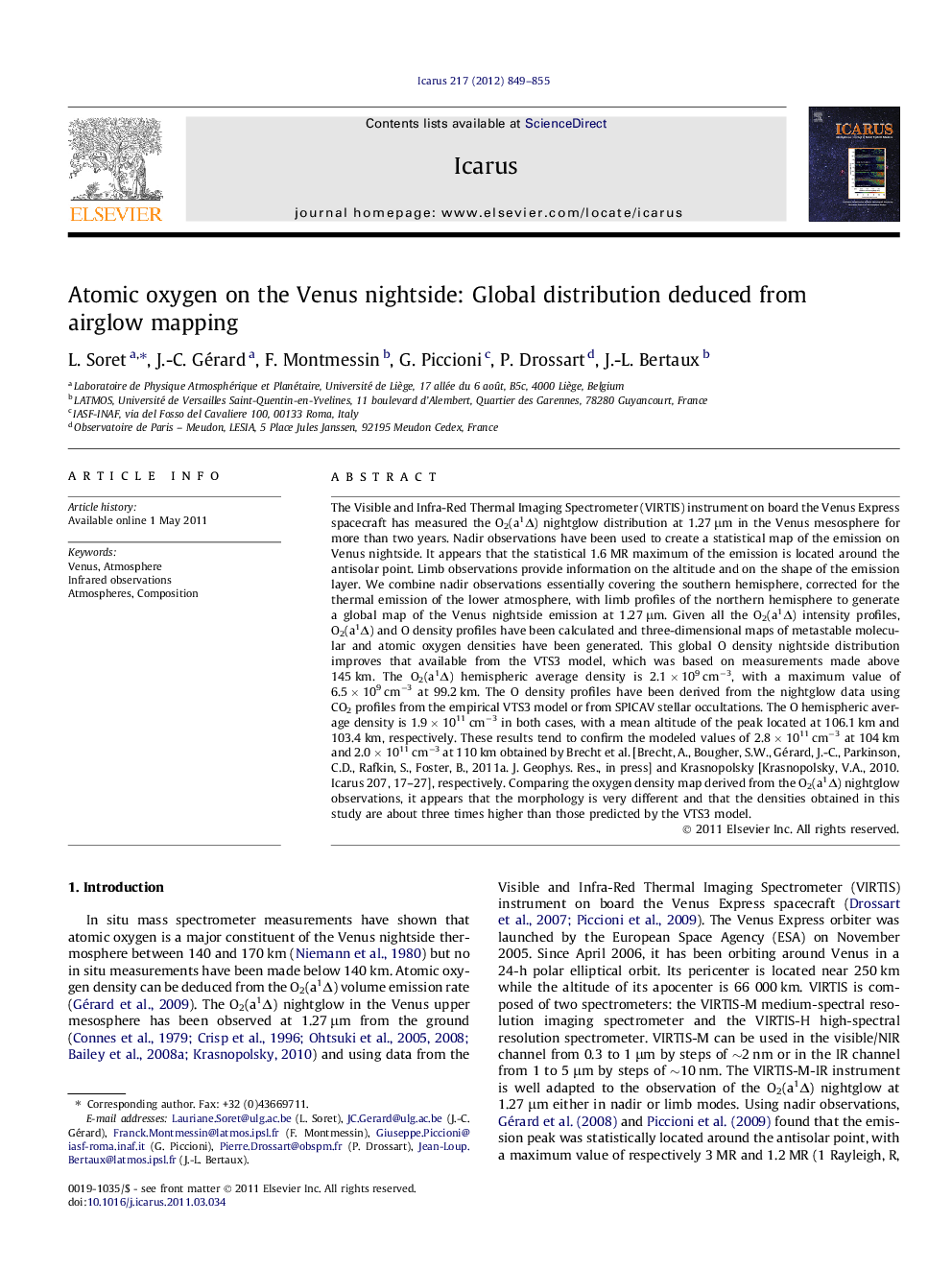| Article ID | Journal | Published Year | Pages | File Type |
|---|---|---|---|---|
| 1773707 | Icarus | 2012 | 7 Pages |
The Visible and Infra-Red Thermal Imaging Spectrometer (VIRTIS) instrument on board the Venus Express spacecraft has measured the O2(a1Δ) nightglow distribution at 1.27 μm in the Venus mesosphere for more than two years. Nadir observations have been used to create a statistical map of the emission on Venus nightside. It appears that the statistical 1.6 MR maximum of the emission is located around the antisolar point. Limb observations provide information on the altitude and on the shape of the emission layer. We combine nadir observations essentially covering the southern hemisphere, corrected for the thermal emission of the lower atmosphere, with limb profiles of the northern hemisphere to generate a global map of the Venus nightside emission at 1.27 μm. Given all the O2(a1Δ) intensity profiles, O2(a1Δ) and O density profiles have been calculated and three-dimensional maps of metastable molecular and atomic oxygen densities have been generated. This global O density nightside distribution improves that available from the VTS3 model, which was based on measurements made above 145 km. The O2(a1Δ) hemispheric average density is 2.1 × 109 cm−3, with a maximum value of 6.5 × 109 cm−3 at 99.2 km. The O density profiles have been derived from the nightglow data using CO2 profiles from the empirical VTS3 model or from SPICAV stellar occultations. The O hemispheric average density is 1.9 × 1011 cm−3 in both cases, with a mean altitude of the peak located at 106.1 km and 103.4 km, respectively. These results tend to confirm the modeled values of 2.8 × 1011 cm−3 at 104 km and 2.0 × 1011 cm−3 at 110 km obtained by Brecht et al. [Brecht, A., Bougher, S.W., Gérard, J.-C., Parkinson, C.D., Rafkin, S., Foster, B., 2011a. J. Geophys. Res., in press] and Krasnopolsky [Krasnopolsky, V.A., 2010. Icarus 207, 17–27], respectively. Comparing the oxygen density map derived from the O2(a1Δ) nightglow observations, it appears that the morphology is very different and that the densities obtained in this study are about three times higher than those predicted by the VTS3 model.
► The VIRTIS instrument measured the O2(a1Δ) nightglow distribution at 1.27 μm. ► Observations have been made in limb and nadir modes. ► A 3D statistical map of the O2(a1Δ) nightglow distribution has been generated. ► Using CO2 density data, a 3D statistical map of the O density has been deduced. ► This map is much more realistic than that of the VTS3 model.
